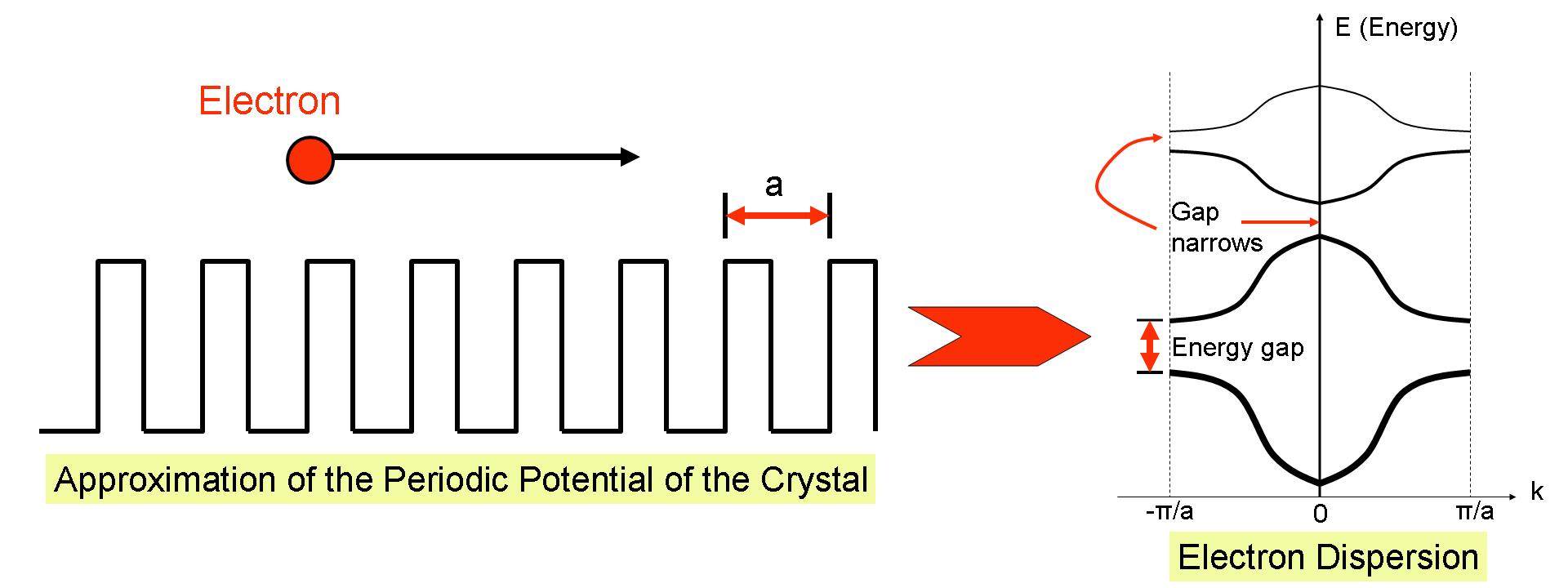By completing the Periodic Potential Lab in ABACUS - Assembly of Basic Applications for Coordinated Understanding of Semiconductors, users will be able a) to understand the Kronig-Penney model and the formation of energy bands and energy gaps due to the underlying periodic interaction potential, b) to understand the concept of the effective mass, and c) to create their own Kronig-Penney solver.
The specific objectives of the Periodic Potentials Lab are:
Recommended Reading
Users who are new to periodic potentials, bandstructure, or the concept of the effective mass should consult the following resources:
1. D. K. Ferry, Quantum Mechanics: An Introduction for Device Physicists and Electrical Engineers, Second Edition (Institute of Physics Publishing, 2001).
Demo
Theoretical Descriptions
* Energy Bands In Periodic Potentials
* Periodic Potentials and the Kronig-Penney Model
Tool Verification
Nanoelectronic Modeling Lecture 14: Open 1D Systems - Formation of Bandstructure
Examples
1. Periodic Potential Lab Worked Examples
Exercises and Homework Assignments
1. Homework Assignment: Periodic Potentials
2. Periodic Potentials and Bandstructure: an Exercise
Solutions to Exercises
Solutions to exercises are provided only to instructors!
Evaluation
This resource will evaluate the user’s conceptual understanding of the physical, mathematical and computational knowledge related to periodic potentials and formation of bandstructure in crystals.
ABACUS: Test for Periodic Potential Lab
Challenge
In this final challenge, users will integrate what they have learned about the Kronig-Penney model.

